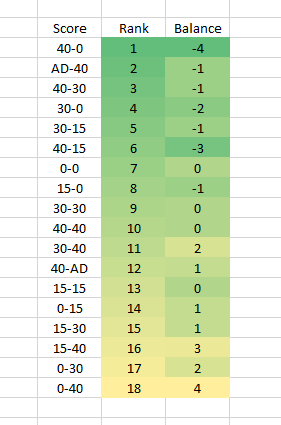I started writing a broad piece on Psychology but it got too big, so I’ve broken off chunks and will list them on the blog for your interest as, when, if I complete them.
Psychology everywhere
Psychology isn’t something that is limited to your inner mind if you are Betfair trading. It’s out there on the sports field and in the associated markets as well. For this blog, I’m looking at Tennis markets.
Over my
Whether you are sports betting, a casual observer of the sport, or Betfair tennis trading, these observations should allow you to get a better perspective on what’s going inside somebodies head in a Tennis match.
If you are looking at Tennis trading strategies, then the sort of thing I’m going to talk about here could be your trading guide when looking at entry points. Traders are looking for breaks of serves, or perhaps how likely somebody is to win the set. That generates the price movements that you can profit from.
What I discovered is that it seems that the characteristics I will
Psychology in Tennis
If you are a full time Betfair trader you are always looking for an edge. Just participating in the market with a strategy probably isn’t enough, somehow you need to be sligtly ahead of the action sometimes.
Tennis more or less boils down to how Tennis players play key moments in the match. When I realised this I thought I would start examining those keys points to understand what happened around those points. As a precursor to this, I looked at just individual games.
The question I was trying to ask was, does a player play 15-0 the same they play 0-15 and what happens when they reach break point? The answer, as I often find, was never straightforward.
Thinking through the problem
Before I analysing anything, I try not to think about the outcome as you can accidentally influence your data mining. But you have to work out how you will structure your data and what you expect to find.
I figured that a professional Tennis player would play each point to the best of their ability. 40-30 shouldn’t be that different from 40-15 and when going for the game, maybe, in fact, they would step it up a gear to close out the game.
Before reading the rest of this blog, what do you think? Do you think all points are equal or are some point more equal than others?
Before I analyse anything I try not to think about the outcome, as you can accidentally influence your data mining. But you have to work out roughly what you are trying to do.
I considered looking the odds at those key points within the Tennis match, but I can model what should happen well enough. So I needed to find some other measure of what was going on the in the mind of the player. I settled on service speed.
Using average service speed would give me a clear measure of how a point was being played. If the server was confident they would serve more aggressively and faster. If they were nervous and worried about getting a shot in, they would serve much slower.
Thought experiment
I carefully picked through reams of data and I initially focused on 40-0 and 0-40 as that seemed an obvious extreme. I was thinking through what could be in the player’s mind at these key points in the match.
The chance of winning a point on serve reaches late 70%’s for top players and touches nearly 84% at the top of that list. At 0-40 down you would stand a decent chance of winning a point and getting yourself back into the game.
If you have to play a second server at this point, your percentage chance of winning a point will drop 20-30%. If you are 40-0 up then you could increase your accuracy a bit with less power and put in a decent service in to close out the game.
The results
Sure enough, the average service speed was different but in the ‘wrong’ way. I had imagined that maybe at 0-40 they had nothing to lose by trying to get a decent
I needed to confirm this wasn’t an anomaly, so I went through each of the score lines and ranked them according to how many shots it would take to finish the game. It turns out there was a correlation. The further ahead a player was, they seem to serve harder. The further behind they were they would put in a weaker serve.
It sort of makes sense that they would want to get the serve in, but by making it weaker they would give the returner a better chance of finishing off the game.
40-0 recorded the fastest average serve and 0-40 the slowest. The deeper trouble the player is in, the slower the service. That sort of makes sense, but doesn’t seem logical in a game plan. Surely you should be risking it a little to get out of trouble?
By playing a slow
It varies a bit up and down the game but it’s an interesting thing to observe. I’ve reproduced a summary below, I’d be interested in your thoughts if you want to comment.
The interesting thing for me was that I almost expected it, but didn’t. A professional player shouldn’t vary the shots that much if they are playing at the highest level, but they do. Which implies that even though they look cool and calm there is some torment going on underneath the surface.
It turns out, just like sports traders, they also have a fear of loss.

